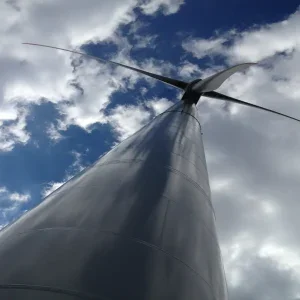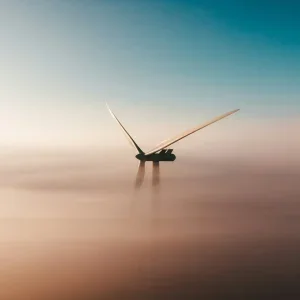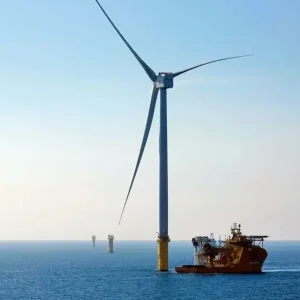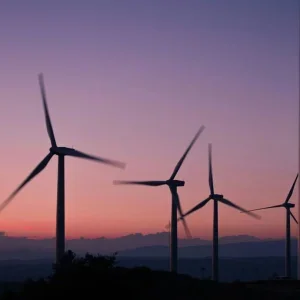Wind energy executives may not yet feel rich, but money is blowing into the sector. By the end of the third quarter of 2014, 110 project acquisitions had already been completed. This follows the previous year’s robust performance of 116 sales – itself a strong increase on the 72 completed in 2012. The growth is partly down to European utilities wanting to shed operational assets. In 2013, 48 divestments of renewable energy projects totalling $7.2 billion were announced, compared with just 27 worth $3.6 billion in 2012.
The trend is accelerating this year, with some of the more notable transactions including DONG Energy’s 25% sale of the 630MW London Array to La Caisse de Dépôt et Placement du Québec for €3.1 billion in January, and RWE’s €266-million March sale of 10% of its 576MW Gwynt y Môr project to the UK Green Investment Bank. France’s EDPR, which has a portfolio of 33 wind farms, also sold a 49% equity stake to Middle Eastern investment bank EFG Hermes this October for $208 million.
The sales are largely motivated by growing financial pressures on Europe’s largest utilities, a number of which – including DONG Energy and RWE – recorded net losses last year. Many have large fossil-fuel generation capacities that are increasingly uncompetitive, thanks to CO2 emissions penalties and the privileged grid access enjoyed by renewables. Moreover, utilities need to shorten balance sheets to avoid potential downgrades from ratings agencies, which would add significantly to funding expenses.
Yield of dreams
New purchasers entering the market in recent years, however, have created a strong demand for wind assets on the buyer side. Of these, the headline-grabbing YieldCos are perhaps the most exciting newcomers.
Typically comprising a bundle of operational clean energy projects to be floated on a stock exchange, these offer wind farm operators new routes to accessing the capital markets. Last year, six such renewable-focused entities raised £1.3 billion through IPOs and secondary offerings on the London Stock Exchange. In the US, NRG Energy’s hotly anticipated YieldCo IPO alone raised $430 million.
YieldCos’ appeal lies in the generous and predictable dividends they offer, which are made all the more eye-catching to investors by the ongoing slump in bond and savings interest rates. They also catalyse the wind market, allowing firms to sell operating assets more quickly, and then plough the money back into new projects.
Wind OEMs have also been purchasing more assets, adding to the broader buyer demand. Siemens Project Ventures has invested equity in Butendiek, Lincs and Gwynt y Môr, and Gamesa and Nordex have both established specific project development units.
Chinese OEMs are also joining in, with the Ming Yang Wind Power Group announcing at the end of last year that it will provide both turbines and EPC services to a 200MW Romanian wind farm – the largest ever export for a Chinese turbine manufacturer. The OEM purchasing is largely being driven by overcapacity in onshore wind: manufacturers wanting to ensure their products sell must help to develop and finance forthcoming projects.
Usually, however, OEMs make short-term investments, often looking to pull out once the site has been commissioned, or following a year or two of operations.
Turning Japanese
The other relative newcomers to wind asset purchasing are the Japanese sogo shosha, or ‘trading houses’, including the likes of Mitsubishi, Marubeni and Toyota Tsusho.
Offering a range of products and services spanning multiple industries, sogo shosha only entered the European renewables sector in 2011, primarily in order to gain first-hand experience that could be put to use back in Japan.
Last year, they were involved in acquiring $1.1 billion of European renewables in 2013, according to Clean Energy Pipeline.
While all these new buyers are driving up the demand for wind assets, the industry’s more traditional investors – private equity and infrastructure funds – have also continued making acquisitions.
Along with the EDPR and RWE sales to EFG Hermes and the UK Green Investment Bank, other notable deals this year include Laidlaw Capital Group’s purchase of the German Veja Mate 400MW offshore project from the BARD Group, and the China CEE Fund and an Israeli Enlight Renewable Energy’s agreement to spend up to $406 million on two Polish wind projects totalling 250MW.
Increasingly, however, both private equity and infrastructure funds are looking to make purchases beyond Europe. Last year, Dentham Capital invested $75 million in Australian wind projects under development by Enersis Australia, National Power and Kato Capital Pty.
This emerging trend is largely due to the Alternative Investment Fund Manager EU Guidelines becoming national law, as well as the Solvency II and Basel III requirements.
Pension and insurance funds are also continuing to invest in wind, seeking shelter in its long-term, stable cash flows from the volatile equity and low-yield bond markets. But while this trend remains largely unchanged, investment methodologies have evolved. Pension funds are gaining experience of the renewables sector and starting to invest directly, rather than through an intermediary fund.
Swede deal
The growing fossil fuel divestment movement is also starting to affect pension investments. This October, one of Sweden’s national providers – the Second AP Fund – announced it would divest €91 million from 12 coal, and eight oil and gas production firms. The move is part of a much wider slew of fossil fuel divestments that has already reached over $50 billion, and includes the Rockefeller Brothers Fund and the World Council of Churches, as well as numerous cities, universities and healthcare organisations.
Interestingly, the Swedish pension provider insisted that its decision was based on "reducing our exposure to the risk constituted by fossil-fuel based energy", rather than any ethical concerns. With the UN stating that three quarters of fossil fuels needed to stay in the ground, it seems likely more fund managers will consider divestment over the years to come, potentially opening the doors for a wave of investment into clean energy, including wind.
The most significant recent mergers have been the union of Areva and Gamesa, which received approval under EU regulations this October, and the Vestas-Mitsubishi combination. Both sets of manufacturers will be focusing on offshore manufacturing, cutting down the competition in an already tight market that is not growing as quickly as many had predicted. The firms will also benefit from sharing the financial risks of continuing political uncertainty.
In onshore wind, Swedish construction firm Skanska has teamed up with UK energy company Ecotricity to form a joint-venture partnership called Skylark in a £500-million deal. It plans to build 350MW of green electricity in the UK. Singapore-based developer Blue Circle and energy group Annex Power have also partnered to invest an estimated $200 million in Thai wind projects.
While the overarching trend in wind mergers and acquisitions is for utilities to sell-off operating assets, it seems unlikely this will continue in the long term. These firms have an unparalleled wealth of experience that will only become more valuable as new players, particularly pension funds, continue to invest. No doubt they will re-enter the market when the time is right.
Nevertheless, as the number of newcomers continues to grow, competition for assets is likely to ramp up, providing a welcome opportunity for expansion and new projects. Provided broad political and economic headwinds can be avoided, it seems the industry has good reason to look forward to the future.






